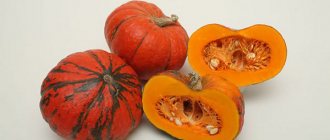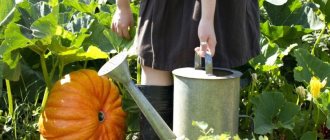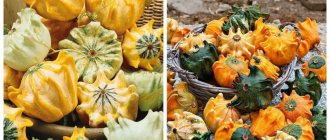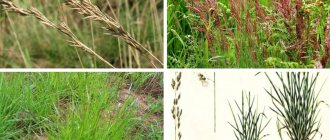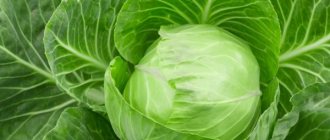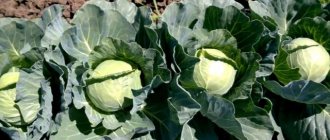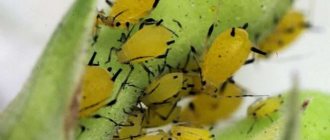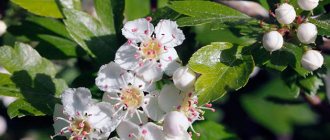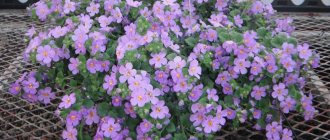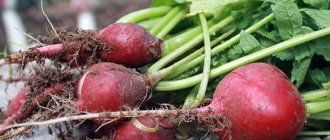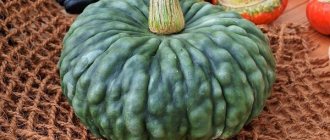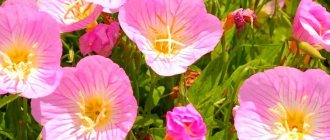- October 10, 2018
- Vegetables
- Ksenia Yedikhanova
Lagenaria, or bottle gourd, is a very ancient plant. It was used by people to prepare drinking vessels. Modern gardeners also grow this crop, but for slightly different purposes. How can you grow an exotic bottle gourd in your garden? The rules and nuances will be presented below.
Types and characteristics of plants
There are several varieties of bottle gourd, so each gardener can choose the variety that he likes best for its decorative and taste characteristics.
The plant is very decorative, it will decorate any area, the most important thing is to choose the right variety
Calabash
Also known as bottle gourd, snake squash, and calabash. The name in Latin is Lagenaria siceraria. This is a creeping vine of the Cucurbitaceae family, with a wide range of uses:
- Young shoots are used in cooking.
- The pumpkins themselves are used to make dishes, musical instruments, smoking pipes, and weave baskets.
Interesting fact! The remains of this plant were discovered in the tombs of ancient Egyptian priests and pharaohs.
Lagenaria bottle
They are considered compact plants, since the length of the vine does not exceed 3 meters, the fruit - 70 cm. The main purpose is to decorate the garden or summer cottage.
Lagenaria polenidae
In appearance, these pumpkins resemble zucchini. However, gradually the fruits grow up to 2 meters in length and reach a weight of more than 10 kg. The leaves resemble the cover of an ordinary pumpkin, large pentagons.
Lagenaria serpentine
Outwardly, it resembles a log-shaped variety, but the fruits are somewhat smaller and have a characteristic “snake” curve, for which they received their name. The average size of a pumpkin is length 70 cm, weight up to 7 kg. Used in cooking due to its sweetish taste.
The fruits of Lagenaria serpentine really resemble snakes
Cobra
It is distinguished by the original shape of the fruit: the round base turns into a “neck”, which ends with a small head, like a snake’s. And the similarity in color - dark spots scattered across the green skin - completes the resemblance to a reptile.
How to use lagenaria
Having looked at various photos of lagenaria, you can see that the plant is a climbing herbaceous vine, but the shape of the fruits is different for each variety. The most common are bottle gourds, so named because their appearance is somewhat reminiscent of a bottle or vase.
The plant can be used in different ways:
- To eat.
- Decorate the area.
- Make unusual souvenirs and crafts.
- Use as a rootstock for other pumpkin plants.
Lagenaria fruits are pleasant to taste and have dietary qualities that will be appreciated by everyone who cares about their health. Young fruits are eaten like familiar cucumbers, but the best dish made from lagenaria is caviar. It is prepared according to the same recipe as zucchini, but it turns out much tastier. This pumpkin can also be pickled, canned, and even the leaves and young stems are edible. This plant has one unusual feature. Its fruits can be cut not completely, but in parts. I wanted to eat - I cut off half a pumpkin. The remaining half will not rot, but will heal and continue to grow.
The optimal fruit length is about 50 cm . During this period, their flesh is tender and the peel is thin. But the longer the vegetable grows and ripens, the more the tissues dry out, and the peel hardens and gradually turns into a real shell. So the ripe fruits are used only for making various souvenirs; they cannot be eaten.
Lagenaria dishes are very beneficial for the body, because they contain magnesium, calcium, iron, vitamins B 1, B 2, C, PP. It is recommended to be used for diseases of the stomach, cardiovascular system, liver, bladder and kidneys. This amazing plant helps improve metabolism, remove cholesterol from the body and even slow down the growth of tumors.
Decorative properties of lagenaria
Bottle lagenaria is grown not only for its fruits. This mighty tropical vine is very beautiful and can be used to decorate an area . Its leaves are large, velvety to the touch, with long petioles. The flowers are goblet-shaped and quite large. But the most interesting thing is their color: a light cream flower in the morning turns into almost white in the evening.
Unfortunately, they fade quickly, but in place of the fallen ones, new ones immediately appear, so that lagenaria will decorate your yard with abundant flowering until late autumn. The fruits can also be shaped to your liking by placing the ovaries in different wooden molds. The pumpkin will grow and take the shape you want.
The root system of lagenaria is very powerful. It quickly grows aerial and underground roots . The main root is thick and has a length of more than 80 cm, and the lateral roots are 3 m or more. For this reason, the vine is often used for rootstock when growing valuable varieties of pumpkin, watermelon or melon.
Botanical characteristics
Bottle gourd has a powerful root system that goes 70-80 cm deep into the soil. Aerial roots are also formed, which gardeners use for grafting.
The fruits are oval or pear-shaped, can grow more than a meter in length, with a radius of 5 cm. The average weight of one pumpkin is up to one and a half kilograms. The maximum number of fruits on one vine is up to 10-12 pieces. The yield of the oriental plant is very good, one stem produces up to 40 kg of tasty fruit.
For reference! Lagenaria is the correct name for this variety of pumpkin; “kelp” is something completely different.
An unusual pumpkin will allow you to get a rich harvest
Description of Lagenaria (bottle gourd)
It is a vigorous climbing vine with large leaves and white flowers that open at night. Its hard-skinned fruits are edible while they are unripe.
The oldest harvest was dated in Mexico from 7000 to 5500 AD. BC, in Peru - up to 10,000 BC. In Egypt, the remains of lagenaria were also found, used around 3500-3300. BC.
Dried bottle gourd with viable seeds can survive in seawater for at least 200 days, which likely contributed to the widespread distribution of this annual plant.
Basic forms:
- round bottle;
- tall round bottle;
- cylindrical bottle;
- long bottle
Lagenaria consists of the following parts:
- roots (up to 1.5 m main root);
- stem, also called whip, vine, liana up to 6 meters long;
- leaves up to 40 centimeters in diameter and pubescent;
- white flowers up to 10 centimeters wide;
- fruit.
Advantages and disadvantages of the variety
Like any plant, lagenaria bottle gourd can have its strengths and weaknesses. Main advantages of the plant:
- The fruits can be used to make crafts.
- The stem is used for culinary purposes; there are many interesting recipes for tasty and healthy dishes.
- The liana looks very decorative and will become a real decoration.
However, it is important for gardeners to remember some disadvantages:
- The plant came from warm latitudes, so it is very susceptible to low temperatures and shade.
- It is important to harvest on time; overripe pumpkins have no nutritional value and taste unpleasant.
Note! In the conditions of central Russia, only the greenhouse growing method is allowed.
Using Bottle Gourd
In the West, lagenaria is cultivated for decorative purposes, so attention is paid to species with a spectacular form in the manufacture of various objects of art, handicrafts or objects useful in the household.
The peeled fruits are very similar to wood in the sense that they can be cut, painted, sharpened, burned, glued and made into many objects.
Ripened bottle gourds are durable, lightweight and waterproof.
Since ancient times, they have been used as utensils - gourds: bowls, bottles, containers. Today's craftsmen make musical instruments, religious objects, craft items, and even highly artistic works of art from lagenaria.
Growing and care
The heat-loving plant can be grown in the Russian climate, but for the success of the idea it is important to approach the process responsibly.
Seed preparation
Table pumpkin seeds are not like the pumpkin seeds we are used to; they are small “strips” divided into two sectors by a hard skin located along the achene. Due to its increased density, the seed has a low chance of germination, so preparation includes:
- Soaking in Epin.
- Place in damp sawdust at a temperature of +24 degrees.
- Mandatory cutting of the skin.
Growing seedlings
The seedling method of working in open ground is suitable only for southern latitudes; in the middle zone, the plant can only be cultivated in greenhouses. Basic recommendations for growing seedlings:
- Prepare seeds in April.
- Plant seeds sprouted in sawdust into containers, sprinkle with wood ash and humus.
Planting in open ground
You can “relocate” the bushes to the garden bed after they reach 10 cm in height. The distance between plants should be 35-70 cm; it is important to provide the crop with supports on which it will climb.
It is better to grow lagenaria in the Russian climate in greenhouses; open ground is only permissible in southern latitudes
Necessary conditions (location, soil)
The plant prefers light nutrient soils. You need to choose a bright place, but create openwork shading to protect from scorching sun rays.
Growing pumpkin from seeds
The annual plant can be grown exclusively from seeds. They can be purchased at a specialized store, or you can assemble them yourself. In this case, only those seeds that were planted only in the 2nd year after collection are considered suitable for planting, otherwise you can get a fruitless plant.
In order to germinate dry seeds, you need to slightly bite their sharp tip or cut it off. After this, it is important to place them in a damp cloth or gauze. After a few days, sprouts appear from the seeds. Throughout this period, care must be taken to ensure that the material does not dry out.
The sprouted seeds are then planted in individual pots with soil. It should be nutritious and contain peat. Some gardeners use peat tablets. The pots need to be covered with film until shoots emerge. This is necessary to create a microclimate.
Harvesting
It is important to harvest bottle gourds correctly so as not to reduce the cultivation efforts to zero.
Lagenaria pumpkin - material for making original decorative dishes
Edible fruits
In this case, cleaning is carried out 3 months after planting; it is allowed to wait an additional week if the summer was cold.
Note! You cannot leave the fruits for a longer period; they will become bitter.
Decorative fruits
Harvesting is carried out 4-5 months after planting, after the skin becomes strong and dark. You can’t pick it earlier, because the shelf life will be shortened.
Obtaining seeds
A photo of a bottle gourd shows all the variety of varieties. Having grown unusual fruits at home, you will definitely want to collect seeds in order to plant them next year. To do this, you need to leave 1-2 fruits on the vine for ripening. After which the pumpkins must be cut to remove the seeds. It is important to dry them well so that they sprout in the future. The seeds need to be dried naturally for several months, and then stored in a dry and dark place.
Drying and processing
If the gardener’s task is to use the fruits to create decorative items, then he only needs to wait for the pumpkins to ripen; the hardening process will take place independently due to the sclereids that make up the bark.
The fruits are cleaned, soaked and dried. You can dry it in the fresh air or in a special oven.
After the bark has completely hardened, it can be used to make jewelry, dishes, and weave baskets.
This is an amazing plant - bottle gourd. While it is not very popular in Russia, it is gradually attracting the attention of gardeners.
Pumpkin juice for women's and men's health
Since it contains substances with anti-inflammatory properties, it is recommended as part of complex therapy as a remedy for the treatment of inflammatory diseases. For example, a man who consumes it can more effectively treat inflammation of the prostate gland.
The diuretic effects of pumpkin have been known since ancient times, so its juice is recommended for pregnant women. Thanks to its mild diuretic effect, you can get rid of swelling. Regular consumption of the product in moderate quantities will have a beneficial effect on many body systems.
How to select and store pumpkin
The fruits should be round in shape. It is not recommended to buy pumpkins that are too large, because in most cases they turn out to be dry. The optimal weight is up to 5 kg. The flesh should be orange. The peel is dense, but not wooden.
Store pumpkin in a cool place with moderate humidity, away from sunlight. It is better to place the cut fruit in the refrigerator. For long-term storage, you should purchase vegetables with stems.
Is it possible to freeze
To increase shelf life, the product can be frozen.
